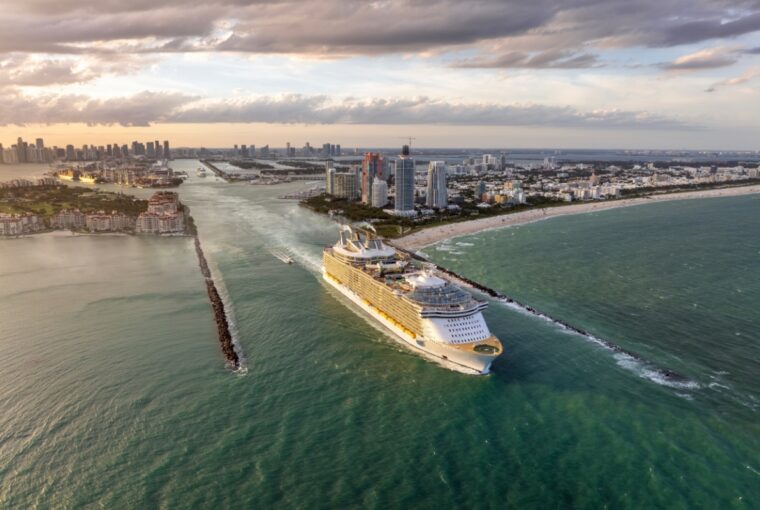Maria Andrade wants to convert 8,000 American harbors to electric vessel transportation within the next fifteen years. Then she’s going after the Caribbean. Then South America. The scale is massive, the timeline ambitious, and the strategy built on a proven model: demonstrate success in diverse environments, then replicate everywhere.
It’s the kind of goal that reshapes industries when the right funding meets the right execution.
Building the Blueprint
Harbor Current Foundation isn’t starting from scratch. Andrade spent twenty years as a licensed real estate professional and raising five kids, which taught her how to guide people through transitions and build consensus across competing interests. The foundation has a structured pilot program targeting Miami, Annapolis, Charleston, and Boston, four cities chosen specifically because they represent different harbor environments. Prove it works in those diverse settings, and you’ve got a blueprint other harbors can follow.
The technology exists. Electric ferries already run successfully in multiple countries. The EPA says marine vessels account for roughly 30% of total port emissions, so the environmental case is documented. What stops most harbors from making the switch is the same thing that stops most infrastructure projects: upfront capital.
Converting a harbor requires vessel procurement or retrofitting, charging infrastructure installation, harbor electrical system upgrades, crew training, feasibility studies, and community education programs. The foundation estimates $2.5 million per harbor for the pilot cities. With economies of scale, that cost should decrease over time. Andrade’s banking on early successes creating momentum that attracts larger institutional funding and private investment. The first few adoptions prove the model works, which makes the next wave easier to fund, which builds credibility for the wave after that.
That cascade effect is central to infrastructure deployment. Getting from four demonstration harbors to nationwide adoption means convincing thousands of individual harbor authorities, city councils, ferry operators, and municipal agencies. Each one has different priorities, budgets, and operational constraints. The foundation’s strategy addresses those barriers systematically through proven results and transferable implementation tools.
Why the Americas?
Andrade’s focus on the Americas follows clear strategic logic. Start with U.S. coastal cities dealing with accelerating climate impacts, then move to Caribbean nations facing urgent sea-level threats, then tackle South American harbors struggling with pollution and aging infrastructure. The model that works in Miami can work in San Juan, Cartagena, and Rio de Janeiro.
American harbors can access federal clean energy incentives and municipal budgets that provide initial proof of concept. Demonstrate the economics in the U.S., and you’ve got a functioning case study for countries with fewer resources. Caribbean island communities are particularly vulnerable to climate change, which creates political will for solutions. South America has massive coastal populations breathing diesel exhaust daily who need these solutions now.
Expanding beyond U.S. borders requires adapting to different regulatory frameworks, electrical grid capabilities, and access to capital. Each country needs its own partnerships, feasibility studies, and local buy-in. The vision is hemispheric. The execution is thousands of individual harbor conversions using a proven, adaptable framework.
What Makes It Work
Harbor Current Foundation’s pilot city goals target 18 months to demonstrate measurable emission reductions. That’s when the scaling phase begins. Success in four harbors creates the blueprint for hundreds, then thousands more. Scaling leverages infrastructure the foundation can influence: manufacturing capacity for electric vessels, trained crews who understand the technology, charging networks that integrate renewable power, and supply chains ready for simultaneous deployments across multiple regions.
Andrade’s strength is bringing diverse groups together and turning collaboration into action. Her years guiding families through real estate deals taught her how to find common ground between competing interests. That skill translates directly to aligning engineers, policymakers, investors, and coastal communities toward a shared goal. The foundation’s approach accelerates adoption beyond typical infrastructure timelines through strategic consensus-building.
The foundation needs substantial financial support from donors who recognize the mission’s urgency. Early philanthropic contributions and impact investments prove the concept, which attracts institutional funding that makes wider adoption possible. It’s a standard model for infrastructure innovation, and it works when the technology is ready and the economics make sense.
Both conditions are in place. Electric vessels cost less over time. No fuel expenses, fewer mechanical problems, longer operational lifespans. Harbor operators save money once you clear the initial investment hurdle. The economics favor electric vessels. The 2040 timeline reflects the urgency of the problem and the pace at which proper funding can drive transformation.
Why the Scale Matters
Harbor pollution has been background noise for so long that most people stopped noticing. Waterfront communities, often low-income families who’ve lived there for generations, breathe diesel exhaust from ferries and water taxis every single day. Kids develop asthma at elevated rates. Adults face increased cardiovascular disease risks. The health impacts are documented. The solution exists.
Harbor Current Foundation treats this as a solvable infrastructure problem, not an unchangeable fact of waterfront life. Andrade’s approach proves the model works in those first four cities, which creates momentum for the next wave. When pilot programs succeed and funding follows, 8,000 harbors represents full-scale deployment. The timeline is aggressive because incremental change hasn’t solved the problem. Transformation at scale requires matching the pace to the urgency.
The foundation’s strategy relies on cascade effects operating at the speed proper funding enables. Demonstrate success. Document results. Provide implementation tools. Remove barriers for the next adopters. Each conversion makes the next one easier. That’s how infrastructure transformation happens.
Harbor pollution is now visible in a way it wasn’t before, and someone’s built a structured plan to address it at the scale required. Harbor communities have been breathing that air for generations. The technology to change that exists right now. Funding is the critical variable that determines how fast the transformation happens.
That’s why the 8,000-harbor goal matters. It’s not aspirational. It’s the actual scope of the problem that needs solving.









